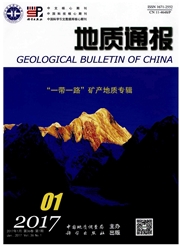

 中文摘要:
中文摘要:
在阐明地下调蓄的有关理念、评价原则和方法的基础上,揭示了南水北调中线石家庄受水区可利用地下调蓄库容19.11×10^8m^3,连续30天调蓄下平均入渗强度为6.88×10^4~9.63×10^4m^3/d·km^2;在南水北调客水、减少开采量和利用当地雨洪进行地下调蓄下,10年后石家庄地下水漏斗的中心水位埋深将由现在的52.3m恢复至39.9~40.8m,漏斗面积由现在的401km2缩小至320~326km^2;30年后中心水位埋深将恢复至22.8~31.4m,漏斗面积195~261km^2。其中减采调蓄模式稳定地下水储存资源,当地雨洪调蓄模式增补储存资源,而南水北调客水直接参与地下调蓄的水量有限,主要作用是为减采和雨洪调蓄模式创造良好的实施前提条件。
 英文摘要:
英文摘要:
On the basis of the elucidation of the concept of groundwater regulation and storage and their evaluation principle and method, the authors reveal that: the capacity of the groundwater reservoir that may be used in the Shijiazhuang waterreceiving area in the central line of the south-to-north water transfer project is 19.11×10^8 m^3 and the average infiltration intension in consecutive 30 day of regulation and storage is from 6.88×10^4m^3/d·km^2 to 9.63×10^4m^3/d·km^2. By transferring water from the south, reducing groundwater withdrawal and using local rain and flood water to recharge groundwater, the groundwater level in the center of the cone of depression of Shijiazhuang groundwater will recover and rise from 52.3 m to 39.9- 40.8 m in ten years and the area of the cone of depression will be reduced from 401 km2 to 320-326 km^2, and the groundwater level will rise to 22.8-31.4 m and the area of the cone of depression will decrease from 195 to 261 km^2 in 30 years. The groundwater withdrawal reduction model may stabilizes the stored groundwater resources and the model of using rainflood to recharge groundwater may increase and replenish groundwater resources, while the role of water transferred from the south is to create a good prerequisite for implementing the aforesaid two models becausse the amount of the transferred water that participates in the groundwater regulation and storage is limited.
 同期刊论文项目
同期刊论文项目
 同项目期刊论文
同项目期刊论文
 期刊信息
期刊信息
